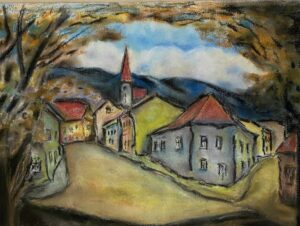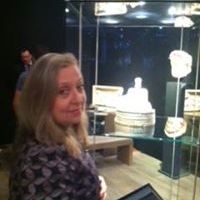
- Buy art because you like it and because it moves you, and because it will enhance your life.
- Visit as many art galleries as you can, gallery staff can be helpful guides in
your art education. - Get on gallery mailing lists so you’ll be invited to openings and special events.
- Visit and join your local art museums and non profit art centers. Curators sometimes give lectures on collecting art.
- Attend National and International Art Fairs and Art Expos whenever possible.
- If you know art collectors, talk to them and find out what they know and what
they’ve learned about collecting art. - Read books on art history and books about collecting art.
- Subscribe to a few art magazines.
- Read reviews by local and national art critics, keeping in mind that reviews
usually just reflect one persons opinion. - Working with a professional art advisor/art consultant is a good way to learnabout art collecting, and they will guide you through the process of purchasing art.
- Once you’ve educated yourself and have fallen in love with a work of art,
buy it, take it home and enjoy it.
TRADE SECRETS
 Natalia Krivinskaya, art consultant, New York:
Natalia Krivinskaya, art consultant, New York:
// Some Thoughts on the Scandal That Has Rocked the Russian Art Market
Russia has more than once made its own contribution to the centuries-long tradition of art forgery. The scandal that recently erupted has, however, seriously shaken the Russian art market, still in its formative stages and thus already unstable. In a wonderful article published in the January 2006 issue of Art News , “The Scandal Sweeping Russia’s Art Market,” Konstantin Akinsha summed up the rumors that had long been circulating. Worthy of the genius of 1920s Soviet satirists Ilf and Petrov, the essence of the con was simple. Hundreds of paintings by minor European artists were acquired at western auctions. These works were slightly touched up in order to give them a Russian flavor, and they were adorned with the forged signatures of well-known Russian artists, artists whose works garner high estimates on the world art market. They were then resold for sums of money many times in excess of the price of the originals.
One cannot help but admire the cleverness of this con, the professionalism, erudition, and skills exhibited by all the players at each stage of the game. The works were chosen with care and an eye for quality, and they were quite artfully redone. Customers were located and persuaded to buy the fakes.
Although some of the forgeries cause experts to do a double take right away, even these works are quite stunning. I was especially impressed by the portrait of a woman, attributed to Vladimir Lebedev (or, rather, by its reproduction in a magazine). Lebedev was an avant-garde artist who worked precisely in this manner in the thirties, and indeed the correspondence is almost exact. The original painting depicted a female nude sitting on a bed. The bed, which was clearly not Russian, and the tender figure of the charming naked lady were cut off and discarded. The remaining head thus became a portrait, which was presented as a work by Vladimir Lebedev at the Moscow Antiques Fair last year. One wonders what they did with that gorgeous body.
And what normal person doesn’t like landscapes? One’s native countryside is a theme beloved by artists, and in many countries the landscape looks much the same, despite the borders. That’s why, for example, a landscape by a German artist was passed off, after a few alterations (ravens in the sky and a little church were added; a German cottage was deleted), as the work of Alexei Savrasov.
In his article, Akinsha gives various examples of the methods used by the forgers, but an analysis of these methods lies beyond the scope of this article.
The Moscow art historian Vladimir Petrov, whom Akinsha interviewed, disclosed many of these trade secrets. He also talked about the enormous work he undertook to identify the forgeries by comparing reproductions and attributions in western auction catalogues with suspicious Russian “masterpieces.”
How could all this have happened on such a massive scale and in such a short time span? The reasons are many, and a thorough analysis would be a time-consuming, large-scale undertaking. One is struck by how the buyers of the forgeries were completely ignorant of the notion of provenance. The main factor, however, was probably the fledgling state of the Russian art market infrastructure, and the fact that art law, which is a well-developed specialty in the west, is at the embryonic stage in Russia . In the west, art law is something that anyone who’s professionally involved with art has to study, be they dealers, buyers, or even artists. Hundreds of articles, monographs, and books have been published on the subject. It’s not just that these books haven’t been translated into Russian, but also that few people in Russia are familiar with them. In the west, museum curators aren’t allowed to render expert opinions that touch on the financial aspects or price estimates of art works. This is the job of art appraisers. In Russia , though, there is simply no one besides curators and art historians who is competent to write such appraisals. In the US , there are professional organizations that regulate this sphere—the Art Dealers Association of America, and The Appraisal Foundation. Both organizations are governed by a system of professional standards and a code of ethics. And western dealers and appraisers value their professional reputations.
There are guidebooks and consultants available for beginning collectors and for those who simply want to acquire works of art. Likewise, the catalogues of auction houses like Sotheby’s and Christie’s explain in great deal the terms of sale of the works on offer. Some houses (Doyle, for example) even hold training seminars. There are also a number of professional websites that track the dynamics of the art market.
The identification of art forgeries is not a matter of theory, but of practice. The sharpness of an experienced eye—the so-called professional opinion—is the first stage on this road. In most cases where provenance is in dispute, a professional opinion is an important but insufficient basis for a final authentication. Sometimes a technical analysis is needed for this purpose, although the analyses offered by special laboratories are quite expensive.
The wildly successful auctions of Russian art held by Sotheby’s and Christie’s (in particular, in New York and London ) sent the prices for Russian art skyrocketing to surprising heights. New Russian customs regulations, repealing the 30% tax on the import of cultural valuables by private citizens, took effect in 2003, but laws governing export remain extremely stringent. This disproportion is also one of the reasons for the current crisis, which has played into the hands of the forgers. Likewise, the strategy that is promoted nowadays in Russia —the acquisition of artworks and antiques as a sound investment—is only partly reliable. For example, the statistics on the rise in foreign currency dividends from art market investments, published in the magazine Profil , makes both the noveaux riches and less well-off profit seekers dazed and confused. These people are usually (though not always) bereft of access to qualified advice on these matters.
Unfortunately, the buyer who ventures into the fairly saturated but introverted Russian art market is taking, alas, a big risk. Such periodicals as Antikvarnoe obozrenie (Antiquarian Review) and Antik.info are interesting journals, but in the main they combine advertising with art history essays and thus have almost no practical significance. The Moscow auction house Gelos is trying with all its might to fill this gap, but it’s not enough. Gelos has a well-designed website, they publish an Internet journal on antiques, and they’re available to answer questions. They’ve even opened an educational center. But Gelos isn’t a university: they have other tasks. In Petersburg , those who want to become dealers and appraisers can take a short course at the Institute of Culture .
I won’t undertake a thorough analysis of the current situation, but I would suggest that reducing the forgeries to mere crimes (which is what they are in essence) will, unfortunately, do nothing to solve the problem, even if all the guilty parties are punished. It is not only today’s Russian art market that has been damaged. The aftereffects are difficult to calculate.
As for the forged works themselves, there are a few museums in the world—for example, in France and Italy —that collect such pieces. Maybe it’s time to open such a museum in Russia as well. We can’t just destroy the paintings, as was done back in the days of the Bulldozer Exhibition! The forgeries are, after all, a kind of cultural legacy.